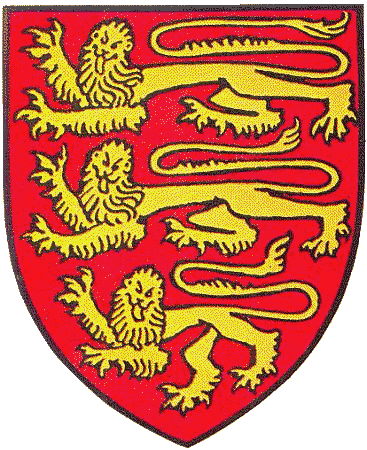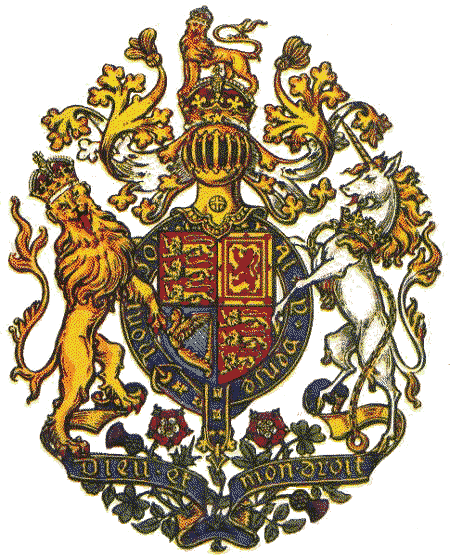
A "Potted" History of Northumbria and Northumberland
Some of this histoy is derived from the "Anglo-Saxon Chronicles". This page will be constantly updated. Please refer to the original references for the accuracy of this web page might be in doubt..
BC Northumbria is occupied by the Bernaccia
AD 43 Rome invades for the second time. Claudius leads 40,000 troops, landing at Richborough, Kent. Caractacus, a rebel leader, flees to the north.
AD 46 The Brigantes, a tribe whose territory ranges from the Pennines of southern Yorkshire to north ot the Tyne, are designated a "client kingdom" of the Romans. They have not been conquered by Rome but have chosen to submit to them and accept them as rulers. The Queen of the tribe is Cartimandua.
AD 50 The major fort of the Brigantes is located at Stanwick, a few miles south of the river Tees.
AD 51 Queen Cartimandua betrays the location of Caractacus to the Romans. Tribal support shifts from the Queen to her husband, Venutius.
Caractacus is paraded thru Rome in chains. His defiance impresses the Emperor, who releases him and allows him to live freely in Rome.
Cartimandua divorces Venutius and plans to marry her lover, Vellocatus. Vellocatus had been the armorial bearer of Venutius. Civil war breaks out between supporters of Cartimandua and Venutius.
AD 117 Hadrian becomes Emperor.
AD 122 Hadrian visits the north of Britain. Because of increasing tribal unrest, he orders the construction of a defensive wall.
AD 126 Most of the wall is completed.
AD 142 A new wall is ordered by Emperor Antonius Pius. This new wall, the Antonine Wall, stretches from the Forth to the river Clyde.
AD 154 The Brigantes rise up against the Romans and force them to abandon the Antonine Wall. The rebellion is centered at Aldborough, near Boroughbridge. Aldborough becomes the new tribal capital.
AD 160 Rome advances north and retakes the Antonine Wall. A new fort is built at Chester-le-Street, where a Roman road runs north to the bridge over the Tyne at Pons Aelius (Newcastle)
AD 163 Hadrian's Wall restored.
AD 165 Rome abandons the Antonine Wall amid tribal unrest and the death of the Emeror Antonius.
AD 180 The tribes cross the Wall and a Roman general is killed.
AD 290 Vindolanda (near present day Haltwhistle) develops into a civilian settlement.
AD 367 The largest uprising to date against the Romans. Tribes (Picts, Scots, Irish and some Saxon pirates from northern Europe) overrun the Wall
AD 399 Rome begins to evacuate its troops from Britain. The troops are needed elsewhere in the Roman Empire as its borders are constantly penetrated by "barbarian" tribes.
AD 410 Most of the Roman army have left Britain to defend Rome against the Visigoth invasion. Rome is sacked.
AD 430 Britons hire Germanic warriors, Saxons and Angles (Anglians), to defend against the Picts in return for land. They begin to settle in Britain. Eventually Britain will be aslo known as Angleland (England).
AD 547 (circa) Ida claims the throne of Bernica.
AD 560 Ida the Flamebearer dies and his son, Theodoric becomes King.
AD 604 Northumbria was founded by the union of the Anglo-Saxon kingdoms of Deira and Bernicia. Bernicia covered the lands north of the Tees, whilst Deira corresponded roughly to modern-day Yorkshire. The kingdom stretched from the Humber to the Forth. After the Viking invasion of the south of the kingdom in 866, Anglo-Saxon Northumbria shrank to land north of the Tees only.
AD 633 On 12 October, the Battle of Hatfield Chase, in which Edwin is killed by Cadwallon ap Cadfan of Gwynedd and Penda of Mercia.
AD 635 The Battle of Heavenfield: Oswald defeats Cadwallon. Deira and Bernica are reunited.
AD 600-700 The Venerable Bede lives!
AD 758 Eadberhty of Northumbria retires to a monastery. His son, Oswulf, takes the throne.
AD 759 On either 24 of 25 July, Oswulf is murdered by his thegns.
AD 761 On 6 August, the Battle of Eildon (or "Edwin's Cliff"). Æthelwold kills Oswine
AD 774 At Easter, the Northumbrians drove their king Alhred from York and took as their king Æthelred, son of Æthelwold Moll.
AD 778 March 22, Æthelbald and Heardberht, probably with the connivance of King Æthelred, murdered three high-reeves.
AD 787 On 2 September, the Northumbrian synod at Pincanheale.
AD 788 On September 23 Ælfwold of Northumbria was killed by Sicga.
AD 791 Æthelred of Northumbria kills the sons of King Ælfwold, Ælf and Ælfwine.
AD 793 Sack of Lindisfarne on 8 June.
AD 796 Æthelred was killed by Ealdred on 18 April.
AD 796 Osbald succeeds to Northumbria on 18 April.
AD 796 Osbald banished on 13 May. He first flees to Lindisfarne and then to the Pictish court.
AD 796 On 14 May, Eardwulf succeeds to Northumbria.
AD 796 Eardwulf consecrated and enthroned by Archbishop Eanbald and the bishops Æthelberht, Higbald and Badwulf.
AD 798 On 2 April, the Battle at Whalley.
AD 806 Eardwulf was forced into exile.
AD 1066 The Normans arrive and the Battle of Hastings is fought and won by the William the Conqueror and his horsemen.
AD 1157 An agreement took place between Malcolm of Scotland and Henry II of England, by which Northumberland was ceded to the latter, who gave in return the earldom of Huntingdon; an exchange which produced great dissatisfaction in Scotland
AD 1300-1600 The Border ravaged by almost constant warfare.

AD 1513 Battle of Flodden Field
AD 1542 Battle of Solway Moss

AD 1607 Queen Elizabeth I dies and the king of the Scots, James VI, becomes James I, king of both Scotland and England. The Border wars come to a quick end.
